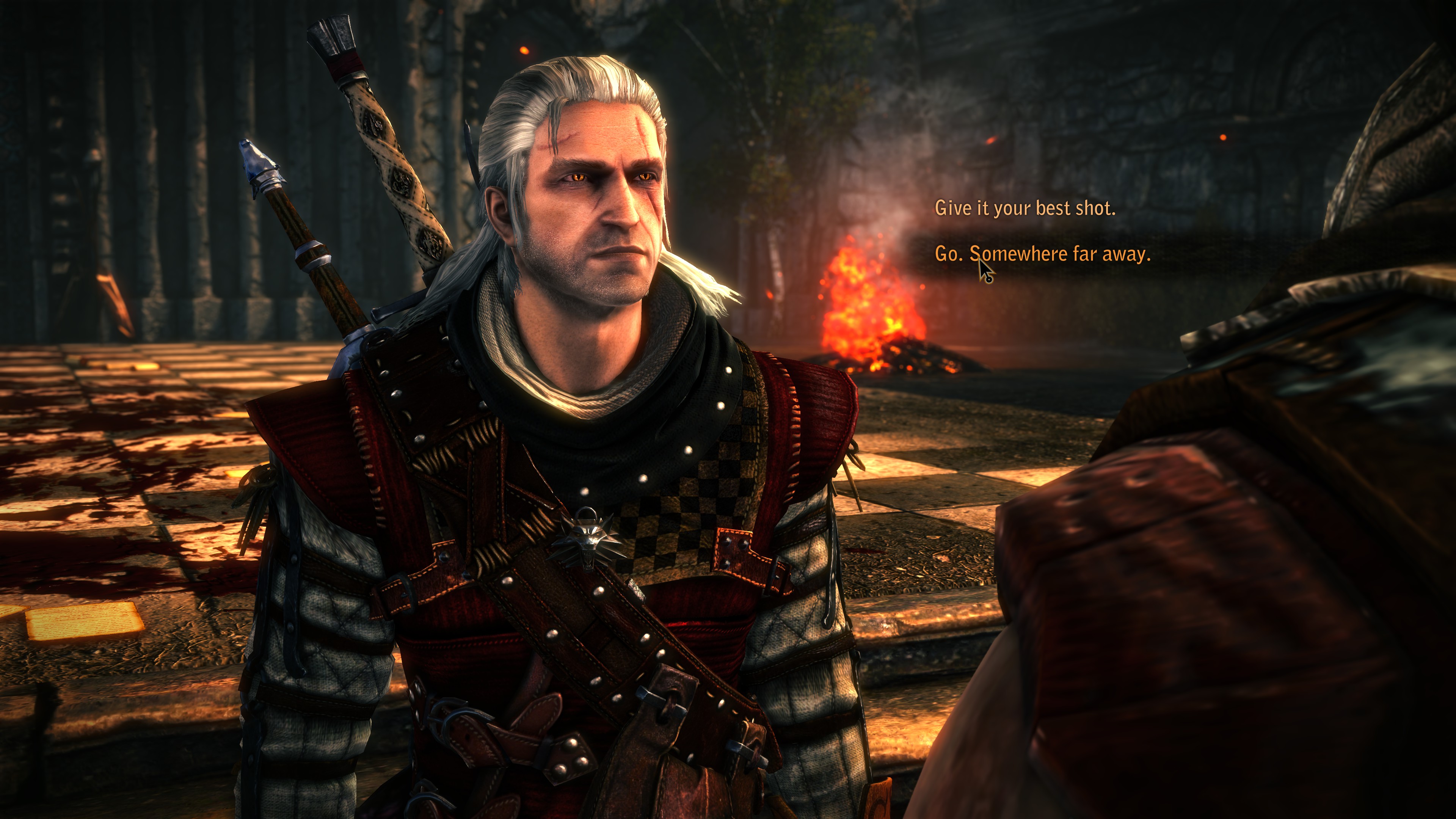It would be absurd to describe The Witcher 2 as CD Projekt’s “forgotten” game. However, between the fascinating wonk of The Witcher and the brain-exploding brilliance of The Witcher 3, the second game isn’t always remembered in the way it perhaps deserves. The third game in particular casts such an enormous, industry-defining shadow that it can be hard to recall the impact Assassins of Kings itself made when it first launched back in 2011.
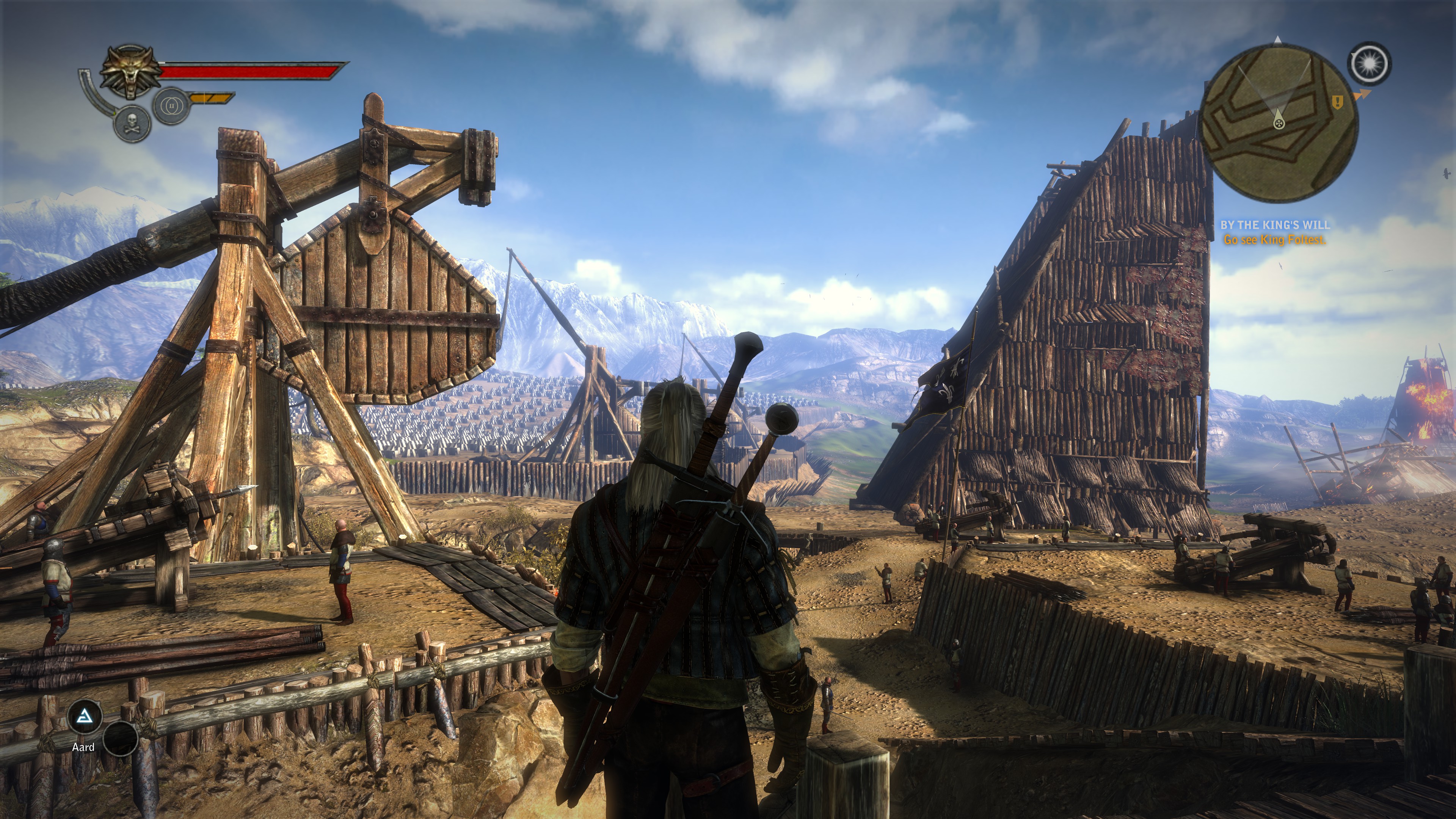
At that time, The Witcher 2 was also one of the best RPGs ever made, a visually stunning, narratively rich, and generally absorbing adventure. It offered complex characters, a brilliantly imagined world, and some of the most dramatic storytelling choices yet seen in a role-playing game.
It’s possible to rekindle that wow factor. All you need do is play the first Witcher and then play the second one right after it, which is what I did. Now, I like the original Witcher, as I spent several articles explaining, but going from The Witcher to The Witcher 2 is like falling asleep in Bolton and waking up in Athens.
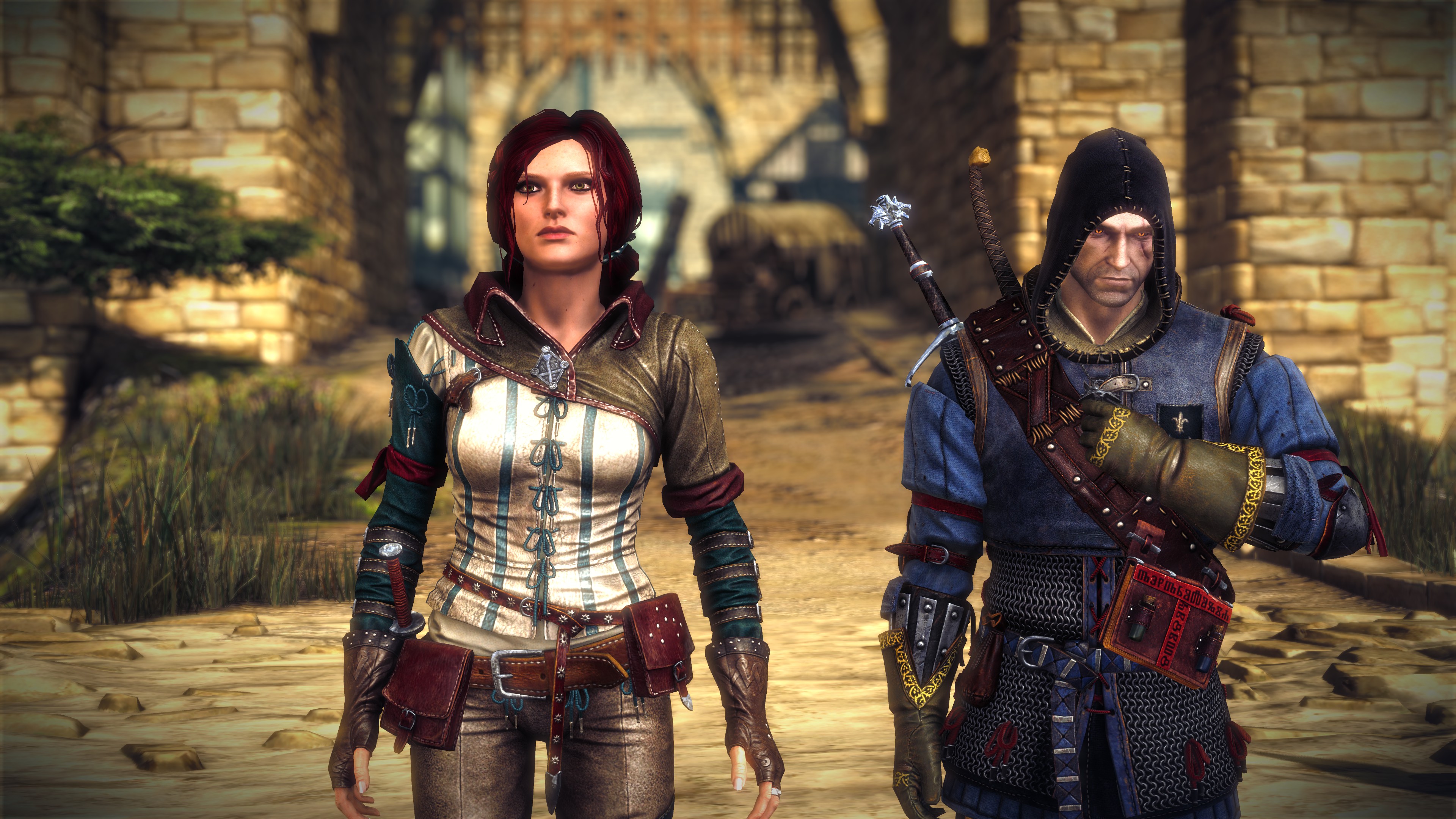
This effect works in large part because, nine years on, The Witcher 2 remains an incredible looking game. CD Projekt did remarkable work future-proofing this second title. Their new RED Engine was state-of-the-art stuff, with cutting-edge lighting tech, unprecedented detail on character models (including some wonderfully ridiculous medieval outfits), and ultra-high-end graphics settings like its infamous Ubersampling. In fact, the studio’s refusal to compromise on pushing the envelope actually got the game accused of performing poorly on PCs when it first released. Like the recent PC port of Red Dead Redemption 2, The Witcher 2’s highest settings were meant only for absolute top-end PCs.
Playing The Witcher 2 in 2020 at 4K resolution with Ubersampling maxed out, it stands up brilliantly, visually speaking. At the game’s outset, you step outside of Triss Merigold’s tent into an an enormous army camp besieging a nearby castle. The sight of the hundreds of tents sweeping into the distance is utterly breathtaking. But the game’s grubby gem remains Flotsam, the muddy, murky trading post surrounded by a lush, ancient forest. Wandering through the undergrowth between Flotsam’s towering trees remains an utterly captivating experience, a little taste of the work CD Projekt would go on to do in The Witcher 3.
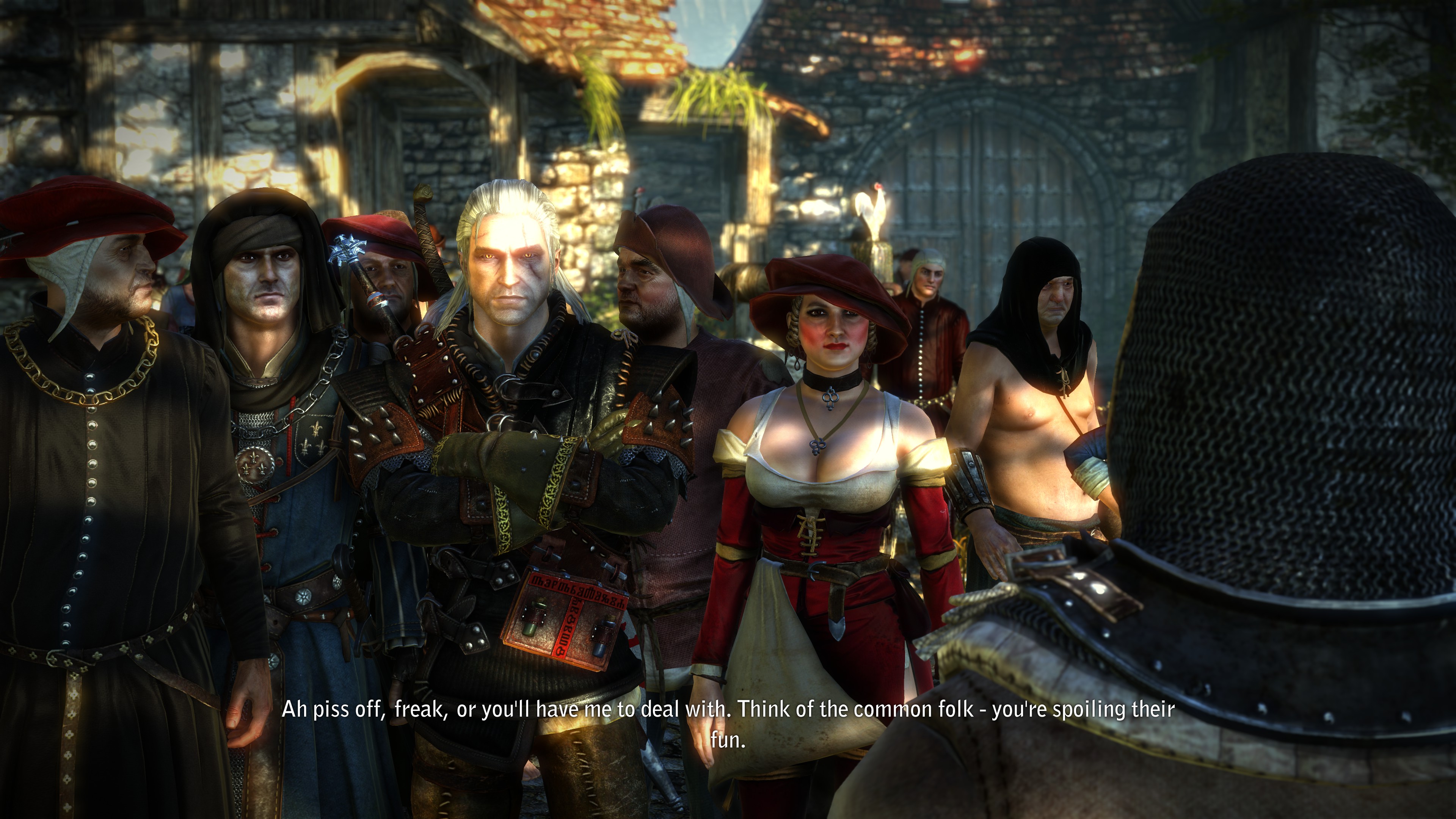
Of course, all this technical wizardry is but a stage for the game’s intricately rendered actors to play out their parts. The Witcher 2’s storytelling is leaps and bounds ahead of the original, commencing with a complex flashback sequence that’s not only interesting but cleverly structured and easily comprehensible. The scripting and dialogue is improved massively over the first game, and as a consequence the characters shine through so much more clearly.
This is perhaps The Witcher 2’s biggest improvement over the original, even more so than the updated engine. The Witcher 2’s plot is no less complicated or convoluted than that of the first game, with Geralt chasing the assassin of King Foltest to clear his name of the same murder. Inevitably, he’s drawn into a complex web of political intrigue that involves warring Kingdoms, rebellious elves, conniving sorceresses, and an Empire lurking in the shadows. It plunges deeply into Sapkowski’s lore, but all of it is communicated beautifully.
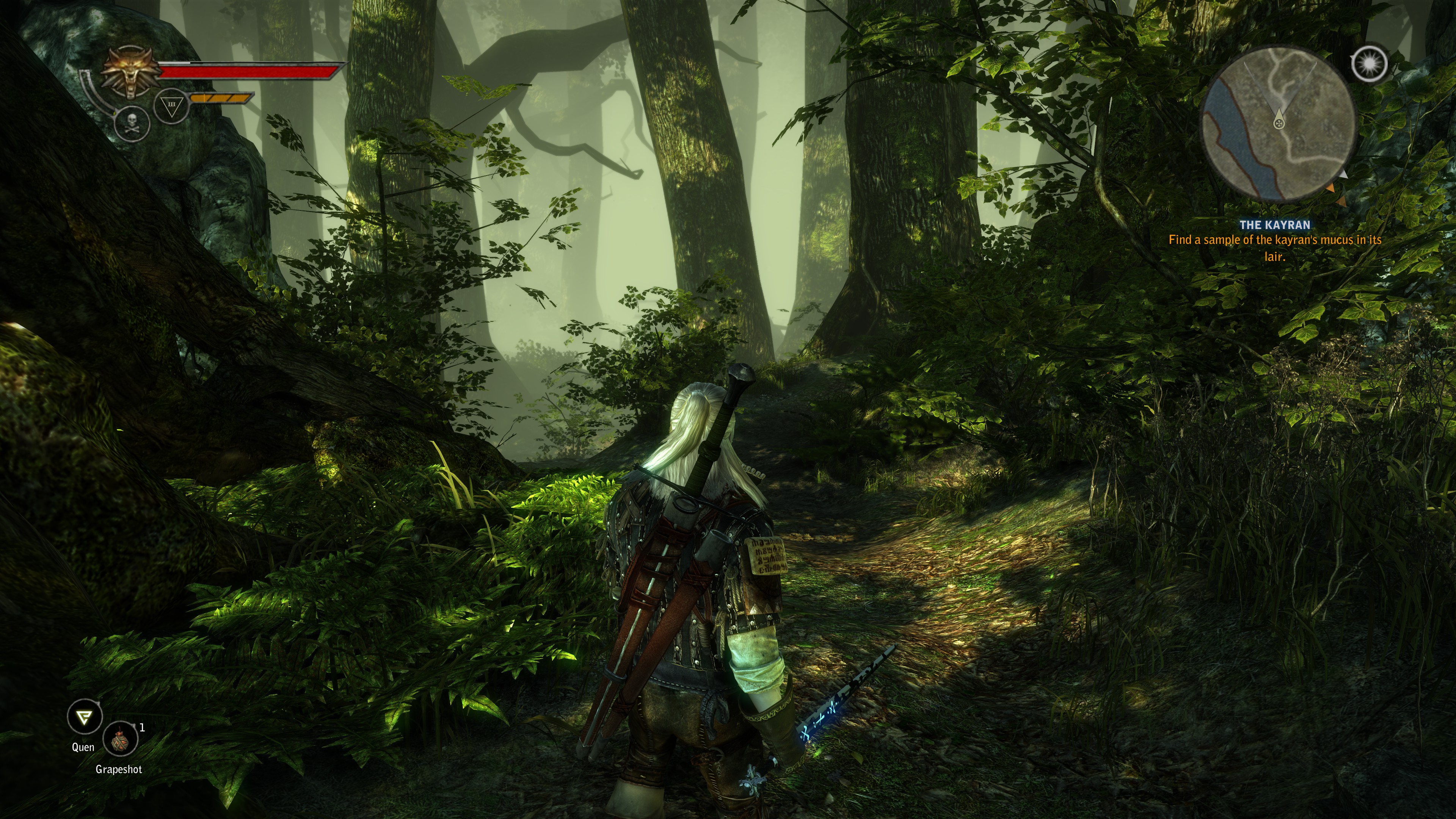
And not just in terms of efficiency. All that plotting and politicking would be utterly tedious without the humanity that lurks beneath it. What’s so fascinating about The Witcher is that its reputation as a grimdark fantasy world is somewhat misleading. There’s no doubt that Geralt’s world is both cruel and coarse, where drunken guards in muddy uniforms yell bawdy songs in Flotsam’s town centre, where murder, torture, and general mendacity are commonplace. But it’s also a game where the warmth of humanity shines through as much as its darker side.
The Witcher 2 gives us a palpable sense of individual relationships, Geralt’s friendship with Zoltan and Dandelion, his sparky encounters with Vernon Roche and the Scoia’tael leader Iorveth (an absolutely brilliant character who sadly doesn’t return in The Witcher 3). Most of all, it gives us the romance between Geralt and Triss, a romance that genuinely explores their continuing relationship, communicating both their attraction to and affection for one another in a way that doesn’t just treat romance as a prize for the player to earn.
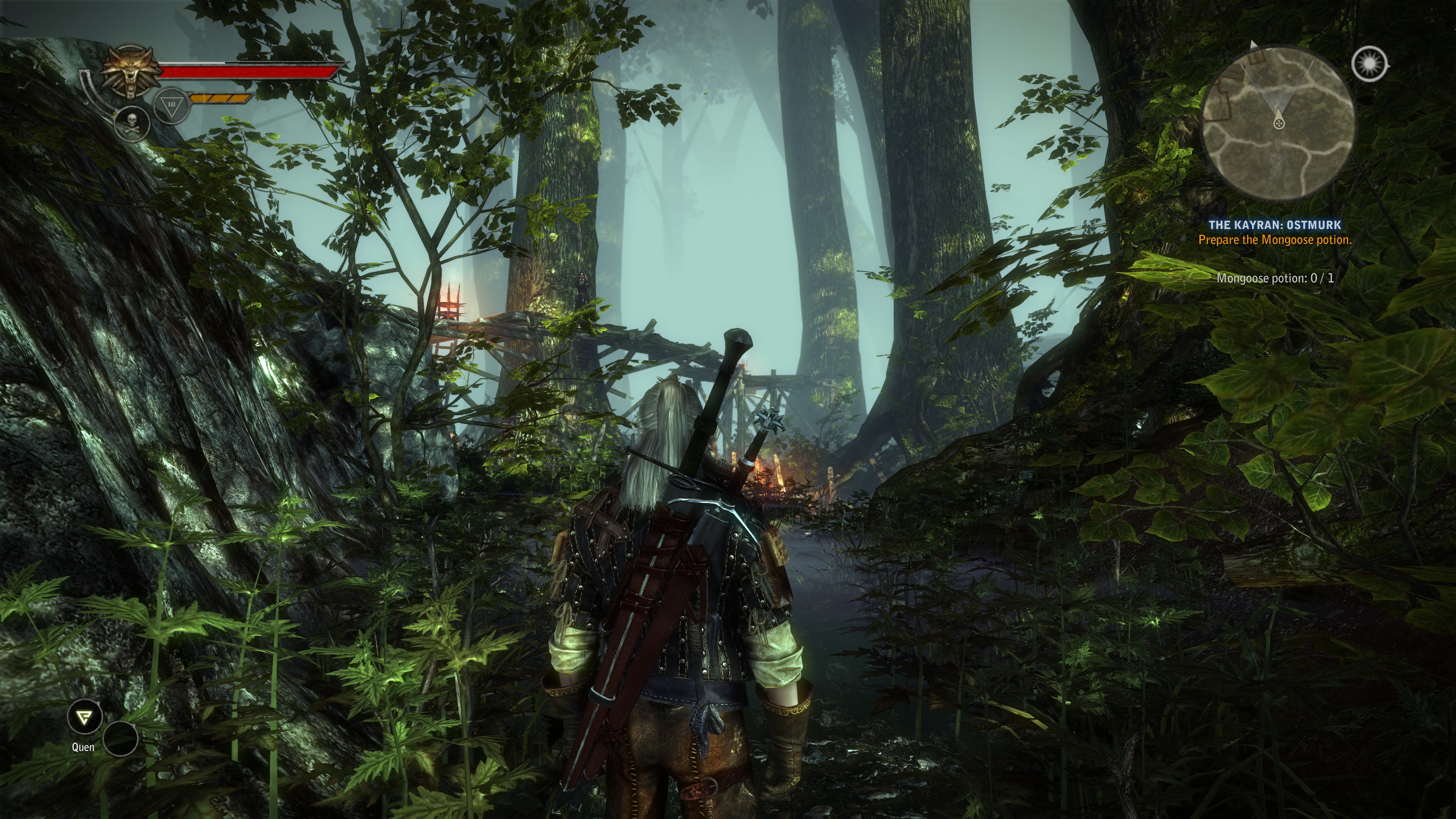
The Witcher 2’s morally grey politicking is also notable in how it avoids both a good/evil binary without descending into simplistic “both sides are bad”. Instead, it gives us the reasons behind its political conflicts and the motivations behind the belligerents involved. It sees different tides of humanity clashing together and asks you to wade through it in the best way you can.
Those tides can be influenced by Geralt in some pretty stunning ways too. While the first act remains largely the same for all players, the second act is about 90% different depending on a seemingly minor choice you make at the end of the first chapter. Putting you on one of two sides of an upcoming battle, you’ll explore an entirely different region with an entirely different story and quests. It’s an astonishingly bold design choice by CD Projekt, and one you might not even be aware unless someone who played it the other way informs you of it. I think it’s this moment where CD Projekt really established themselves as an RPG designer to be reckoned with. Even now, The Witcher 2 remains fairly unique in just how extensively different the game can play out.
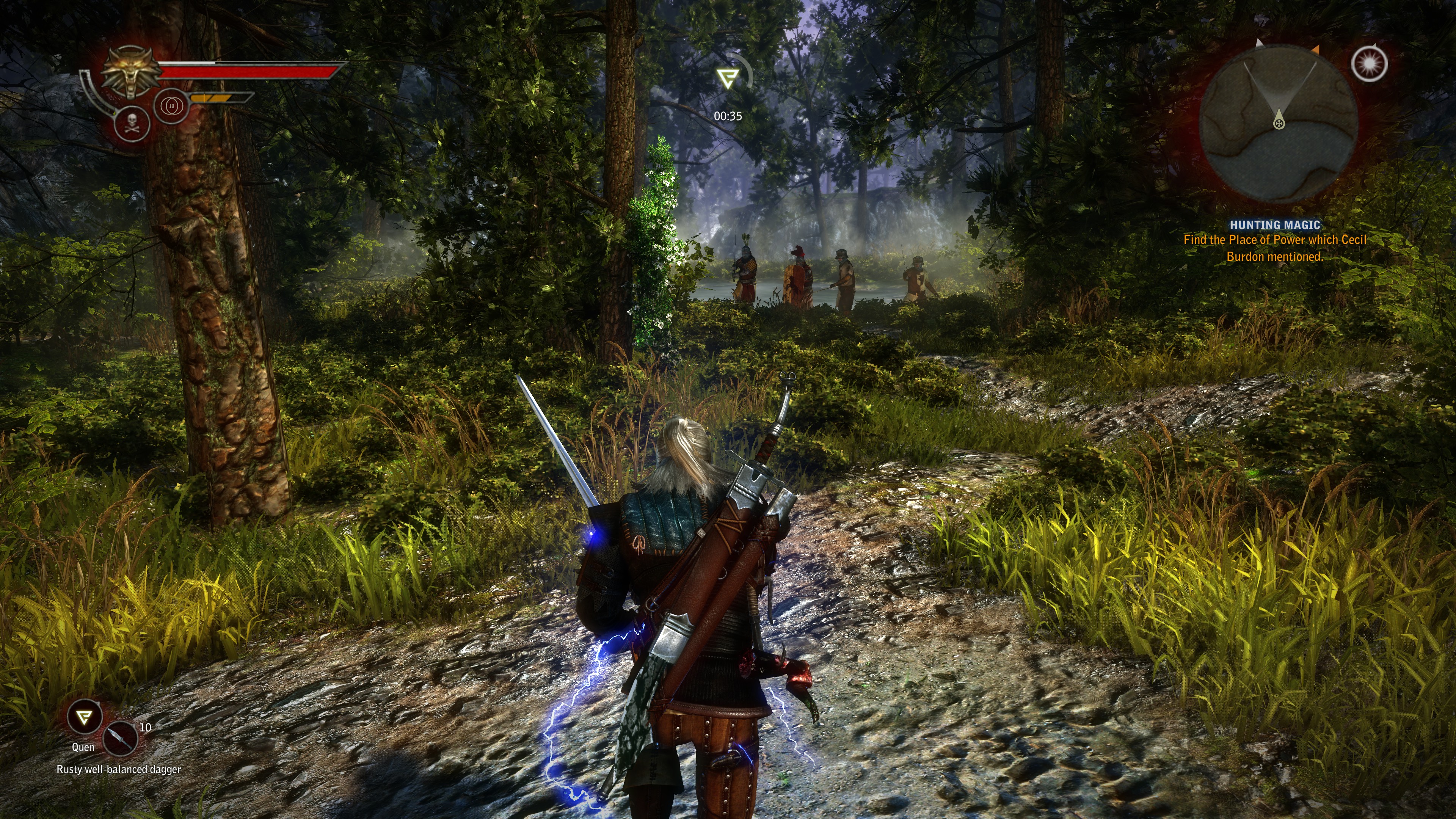
For all the improvements The Witcher 2 makes, however, it isn’t entirely free of the wonk that looms over the legacy of the original. The overhauled combat system sports some neat ideas (and fantastic animation), but the result isn’t nearly as enjoyable as it should be. Part of the problem is your abilities are massively restricted at the start of the game, which means you spend most of your time either A) rolling around on the floor, or B) dying. The combat improves considerably as the game goes on, but it only really gets interesting in the latter third.
The boss encounters suffer similar problems. The infamous Kayran fight looks amazing, but is an absolute nightmare to play through, and the battle with Letho that follows on shortly after is even worse. Part of the issue relates to having to “prepare” for battles by meditating and consuming potions, but you often don’t know when you’ll end up in a battle, and so you don’t always get that opportunity. The Letho fight is bookended between several long cutscenes, with no chance to prepare during that time. A neat idea, but it fundamentally does not work.
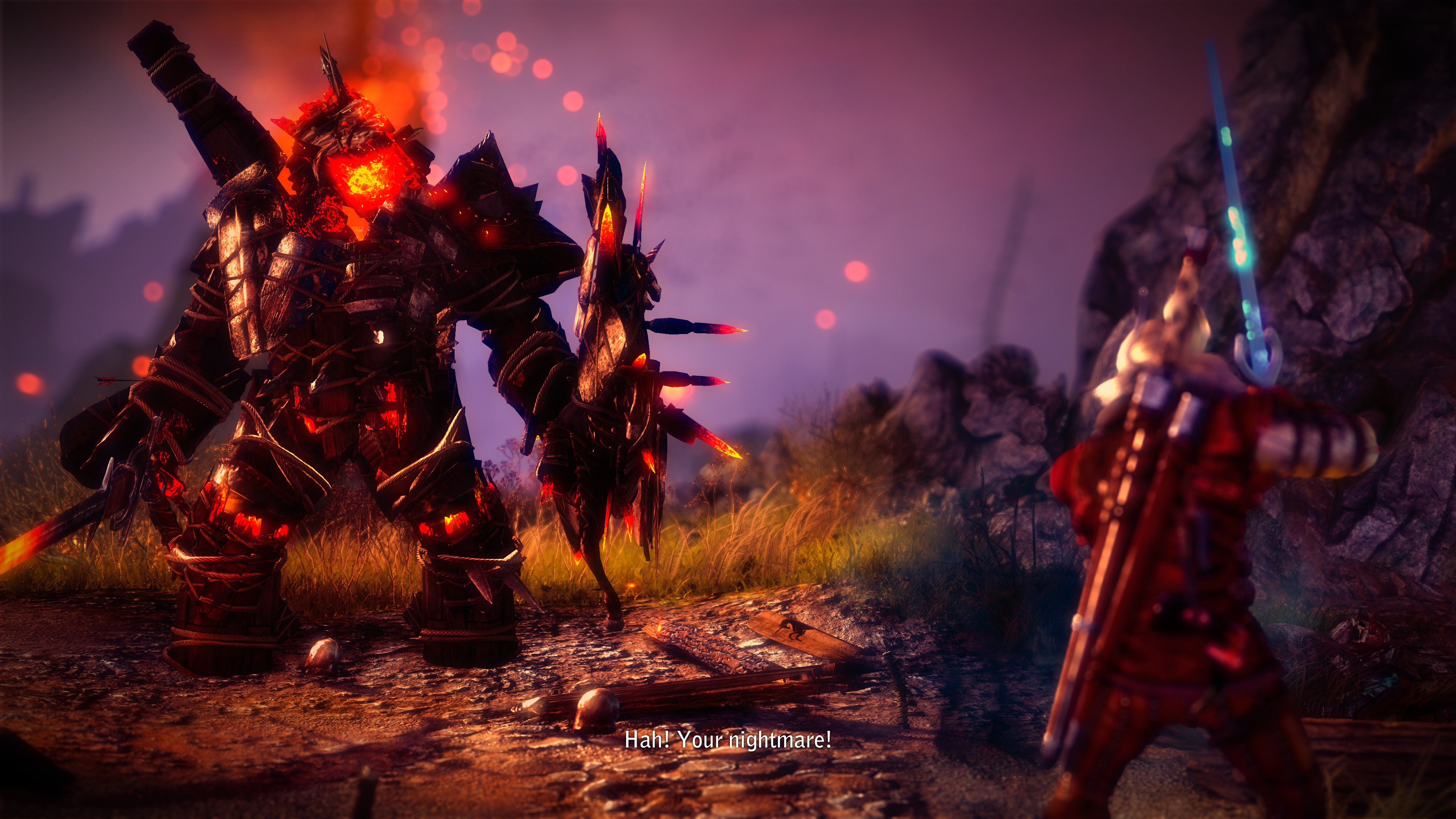
A lot of criticism since the game’s launch has also focussed on the final chapter, which is much shorter and sparser than the previous two. Personally, I don’t mind this. By the time the epic clashes of the second chapter were finished, I was happy for the story to start pushing for a conclusion. The issue is more that it makes you think there’s going to be a similar level of exploration and questing when in fact this isn’t the case. The Enhanced Edition supposedly adds extra content to this chapter, but there’s no real impetus to actually follow it. It adds little of note to the experience.
While the final chapter is somewhat haphazard, The Witcher 2’s actual ending is brilliant. In fact, I’d say it’s one of the best of any RPG. When all the politicking is done, the wars fought, the backs stabbed, everything comes down to a confrontation between Geralt and Letho, the rogue Witcher and Foltest’s true Assassin. But instead of getting straight to the fighting, he offers you a drink, and offers to calmly explain his actions, not in an Evil Genius way, but in the way of a man who has clearly thought out reasons for doing what he did.
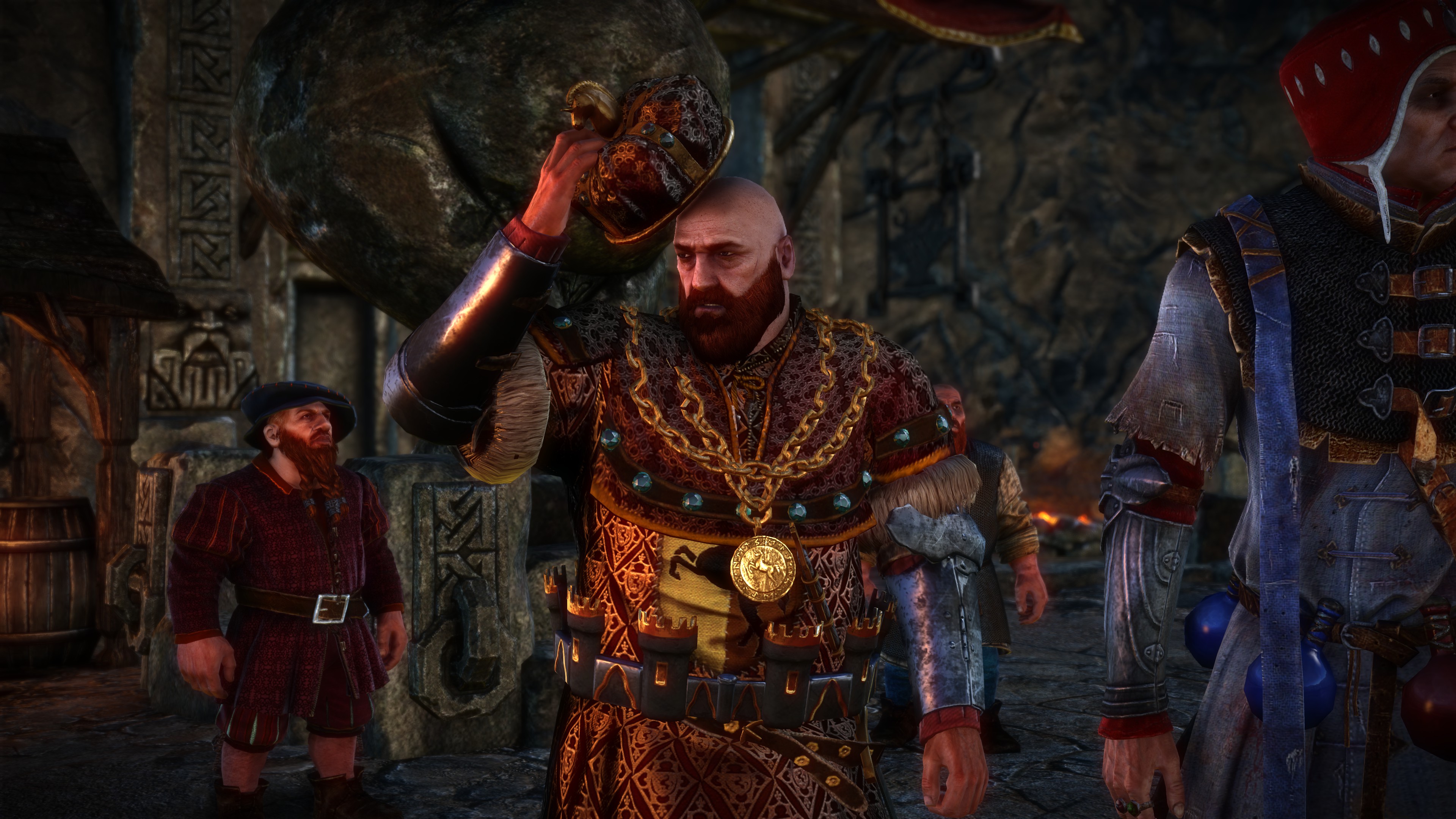
Once he’s done, you can have your fight to the death if you want. Or, you can simply let him walk away. As he explains it, Letho isn’t really Geralt’s enemy. Geralt just happened to be in the wrong place at the wrong time. Moreover, the people that Letho killed were far, far worse people than Letho himself, and Geralt’s own hands aren’t exactly clean when it comes to killing monsters that don’t have fur or fangs.
It’s about as good an ending you could ask for, from a game that turned out to be a prelude to a much bigger story. If the Witcher 3 is CD Projekt’s masterpiece, The Witcher 2 was its declaration of intent, a statement that it was more than just an obscure, mid-tier developer with an obscure, mid-tier fantasy license. Like the Nilfgaardian invasion at the end of the game, The Witcher 2 was CD Projekt’s surprise attack; The Witcher 3 would see it take over the world.
